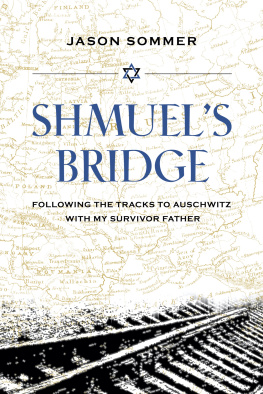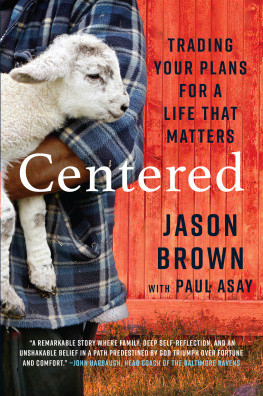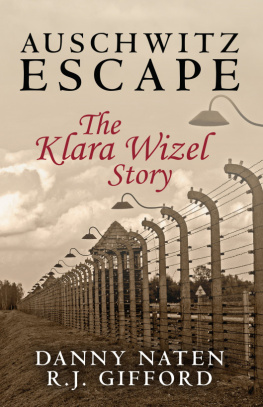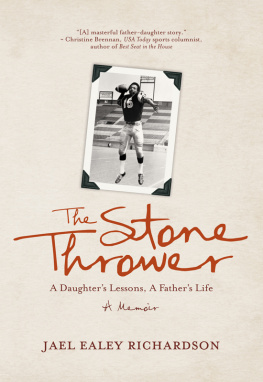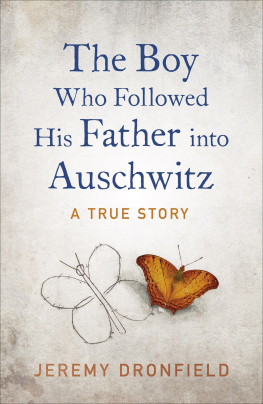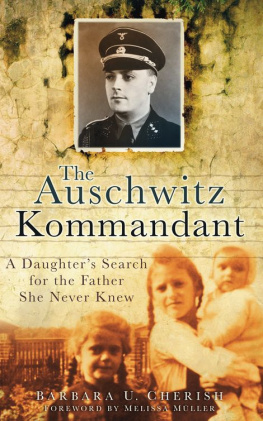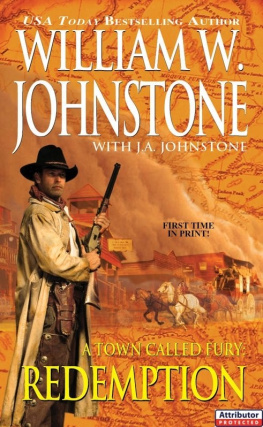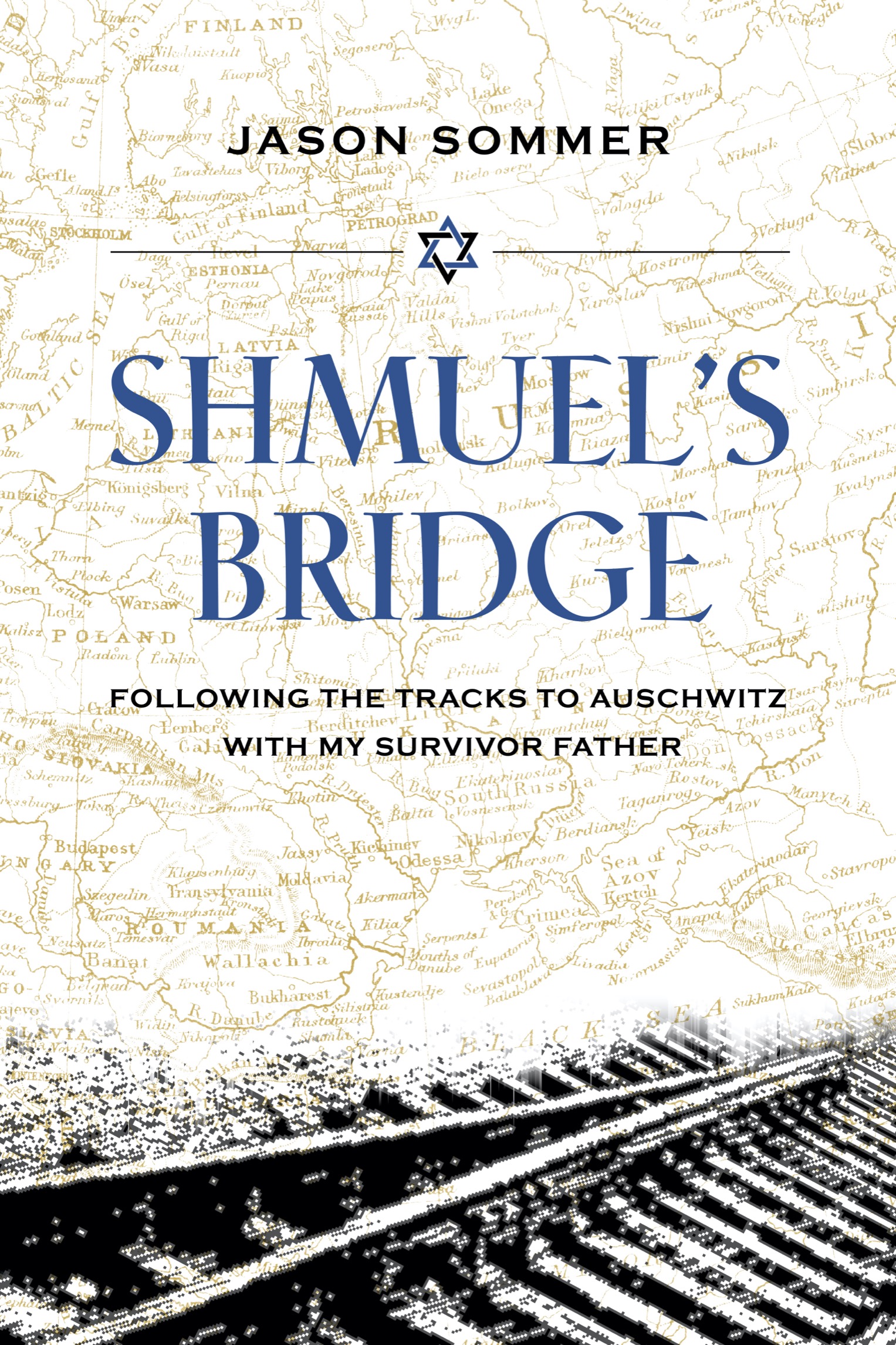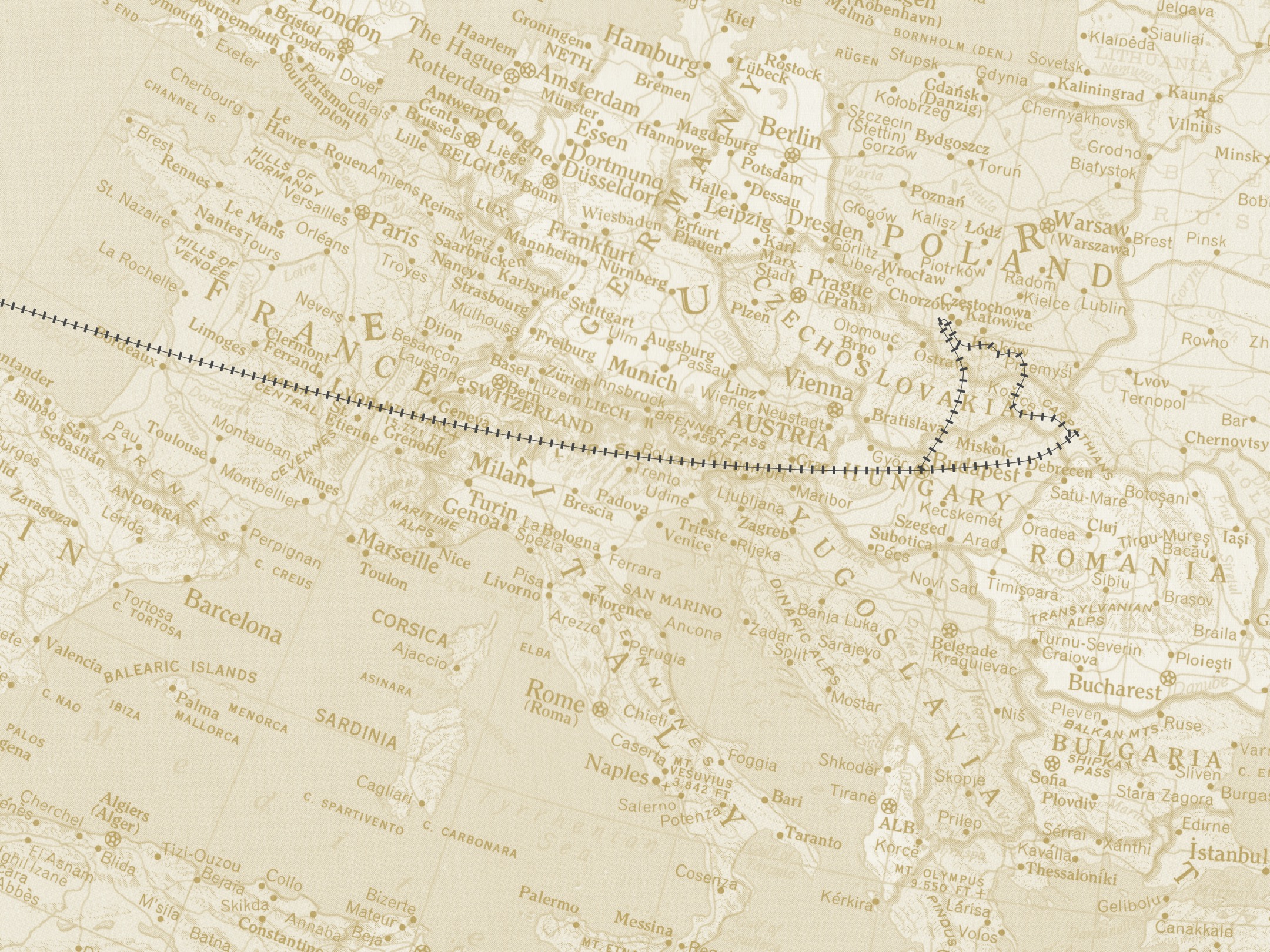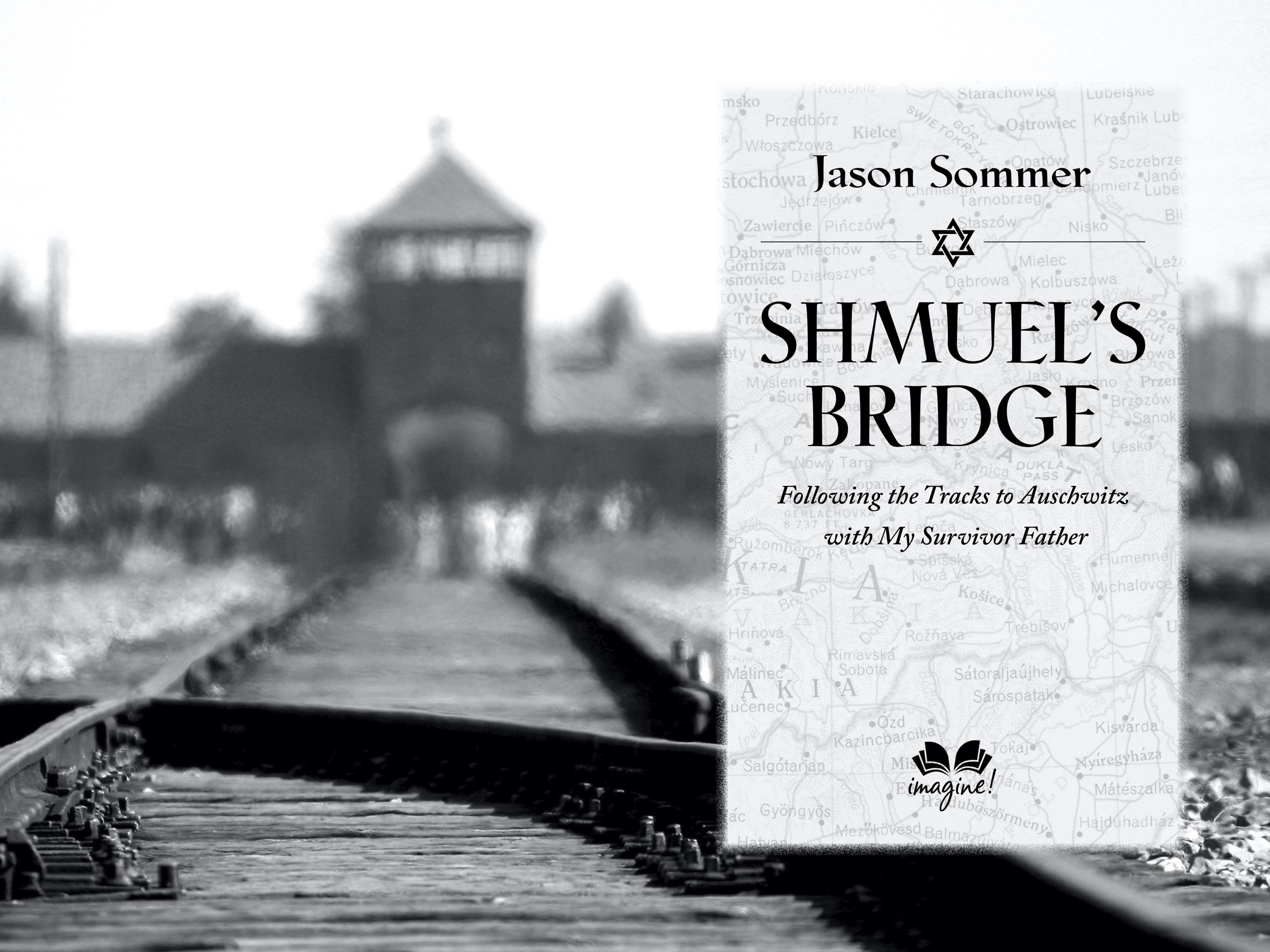Contents
Landmarks
Print Page List
Copyright 2022 by Jason Sommer
All rights reserved, including the right of reproduction in whole or in part in any form.
Charlesbridge and colophon are registered trademarks of Charlesbridge Publishing, Inc.
At the time of publication, all URLs printed in this book were accurate and active.
Charlesbridge and the authors are not responsible for the content or accessibility of any website.
An Imagine Book
Published by Charlesbridge
9 Galen Street
Watertown, MA 02472
(617) 926-0329
www.imaginebooks.net
Library of Congress Cataloging-in-Publication Data
Names: Sommer, Jason, author.
Title: Shmuels bridge: following the tracks to Auschwitz with my survivor father / Jason Sommer.
Description: Watertown, MA: Charlesbridge, [2022]. | Summary: A memoir recounting the authors trip with his survivor father to Eastern Europe to locate the bridge where his uncle was killed on the way to Auschwitz. Provided by publisher.
Identifiers: LCCN 2020057810 (print) | LCCN 2020057811 (ebook) | ISBN 9781623545123 (hardcover) | ISBN 9781632892393 (ebook)
Subjects: LCSH: Sommer, JasonFamily. | Sommer, JasonTravelEurope, Eastern. | Auschwitz (Concentration camp) | Holocaust, Jewish (19391945) | Children of Holocaust survivorsUnited States. | Fathers and sons. | JewsIdentity. | Identity (Psychology)
Classification: LCC D804.196.S645 2022 (print) | LCC D804.196 (ebook) | DDC 940.53/18 [B]dc23
LC record available at https://lccn.loc.gov/2020057810
LC ebook record available at https://lccn.loc.gov/2020057811
Ebook ISBN9781632892393
Production supervision by Jennifer Most Delaney
Ebook design adapted from print design byLilian Rosenstreich
All interior photographs are printed courtesy of the author, except for the photo on , courtesy of the Ronald Reagan Presidential Library.
Map credits: Lionel Pincus and Princess Firyal Map Division, The New York Public Library. Map of upper New York City and adjacent country: showing the city above 125th Street The New York Public Library Digital Collections. 1890, Lionel Pincus and Princess Firyal Map Division, The New York Public Library. Ohmans Standard Map of the Bronx. The New York Public Library Digital Collections. 1917, Lionel Pincus and Princess Firyal Map Division, The New York Public Library. Map of the enlarged City of Brooklyn, published for the Brooklyn Directory The New York Public Library Digital Collections. 1894, Lionel Pincus and Princess Firyal Map Division, The New York Public Library. New and correct map of the Great Rock Island route, Chicago, Rock Island & Pacific Railway: the passengers favorite route between Chicago and Council Bluffs, Kansas City, Leavenworth, Atchison, Minneapolis, St. Paul and all points east, west, south-west, and north-west The New York Public Library Digital Collections. 1883, Bartholomews chart of the world on Mercators projection by Norman B. Leventhal Map Center at the BPL is licensed under CC BY 2.0, Lionel Pincus and Princess Firyal Map Division, The New York Public Library. Obuda, (Budapest). The New York Public Library Digital Collections. 1910.
a_prh_6.0_139403813_c1_r0
for Meilech Steinberger
for Shmuel Steinberger

Dem emess meg men zogen af dem eigenen taten.
One may tell the truth about ones own father.
YIDDISH PROVERB
Contents
Preface
he thought
he heard his father stir in the next room.
His fathers sleep is delicate, forbidden
to disturb. He had been somewhere terrible
and narrowly come through.
LIKE THIS PREFACE , each chapter in this book begins with lines from poems of mine, poems that testify to a long involvement in rendering the Holocaust stories of my familymy aunt, my uncle, and above all my father. (The sources of each excerpt can be found on .) These poems have been meant to preserve not only what they retellwhat has been told to mebut to say something about the telling itself, how such stories are transmitted and received, how lives form around survivors and their narratives. How my life did, anyway.
Much of my poetry has been an attempt to comply with the explicit charge made to me by survivors to write about what happened to them. But the poems have also been a chance to have my own voice heard among those whose experiences were more significant than my own, to try to make sense of what it is to come after. This book attempts a similar task. Shmuels Bridge has its origin in my proximity, my love, for those whose lives were far more difficult than mine, made so by the obsession of Germans, Hungarians, and others to injure, to enslave, and then to murder them. Awareness of that dark fact, and the obligation that came with it, has never been far from my mind, even in childhood, before I could properly articulate it, or as a young adult, when I wanted to resist it.
This book represents an opportunity to examine the impact of the personal history of my father and his family more freely, more fully, perhaps, than poems allow. Central to that examination is a literal journey that my father and I took in Hungary, Poland, Slovakia, and the Ukraine, traveling to places that were the setting of his Holocaust experiences and that of others dear to him.
I did not set out on that journey with a book project in mind. Indeed, it took a very long time for that trip to become this book, and it would not have happened at all except for the encouragement and belief of one gifted novelist turned editor. Kevin Stevens, familiar with my poems, encouraged me to take on this memoir and served as the ablest of guides.
I also owe gratitude to others for their support, of which this book is only the latest example in a long reliance. I could not have hoped for better first responders. If I started out with the good fortune of having a wonderful writer for an editor, my readers were similarly a talented group of poets, teachers, and writers in various hyphenated combinations:
I thank Rich Moran for his most careful and detailed responses to the manuscript. Were that his only contribution it would have been sufficient, but hours of conversation helped me think through and shape what I was writing.
Historian and author David Marwell appears as himself in these pages, where I call him the source of all things historicaland so he has been, steering me to resources and being a resource himself as he answered my questions and shared his erudition with the utmost generosity.
Poet Alan Shapiro has been in this, as in years of my literary efforts, the wisest and best of advisers, always identifying the heart of the matter and helping me to get there.
Poet Chuck Sweetman assisted perhaps more than he knowsnot only in applying his able mind and eye in reading the draft, but in his availability for thoughtful literary exchange all along the way.
Poet Jane Wayne, who thinks people go on too much in acknowledgments, must nevertheless be made aware of how I valued her reactions to early sections as well as the final draft.

